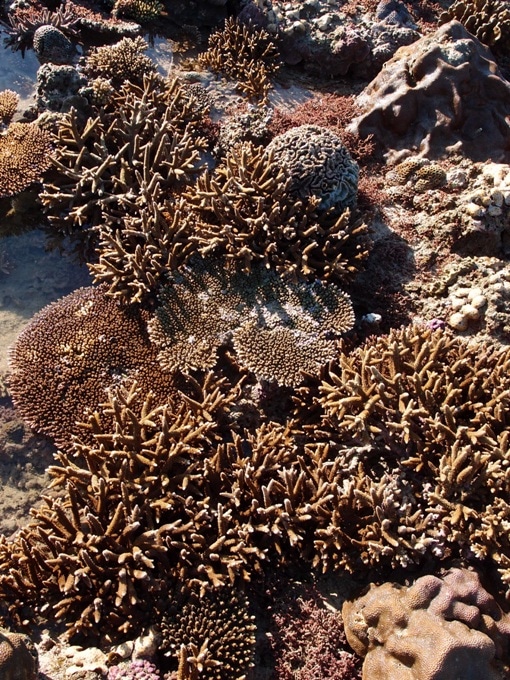Aug 23 2019
Remote reef communities in the central inshore Kimberley survived the 2016 global bleaching event, giving hope to Western Australian marine scientists looking to find ways to combat the effects of climate change.
 Healthy corals in the intertidal zone at Montelivet Island. Courtesy Zoe Richards
Healthy corals in the intertidal zone at Montelivet Island. Courtesy Zoe Richards
A recent publication confirms the breakthrough discovery by a team of Western Australian Museum scientists. The researchers examined the composition and health of marine organisms at 13 coral reef sites in the Bonaparte Archipelago – a largely inaccessible area of the inshore central Kimberley.
Lead author, Dr Zoe Richards, WA Museum Research Associate, Curtin University Senior Research Fellow, and co-author Dr Nerida Wilson, WA Museum Senior Research Scientist, co-led the expedition and described the region as a ‘tropical refuge’ for sensitive taxa such as Acropora (stony) corals.
“Not only did these communities survive the severe 2016 global coral bleaching, but they also remained healthy, which, for the time being, makes us look at the region as a potential tropical refuge,” Dr Richards said.
Dr Richards said there are only a small number of identified ‘climate refuges’ across the globe, and stressed the importance of learning from these healthy communities as soon as possible.
“It is vital that we learn as much as possible from these communities to help better understand why these corals are surviving when corals in other parts of the world are not,” Dr Richards said.
Dr Wilson said, “It is heartening to see that different organisms are co-existing and surviving in these communities, including hard and soft corals, sponges, and clams.”
“This finding is very exciting and hopeful. However, the location’s ability to persist as an ecological refuge under future climate scenarios is not known,” Dr Wilson said.
One important step toward identifying these survival patterns has been the research undertaken to understand the extent of ocean warming at the Bonaparte Archipelago.
Curtin University Adjunct Researcher Dr Rodrigo Garcia examined sea surface temperature data from different satellite sensors positioned at three locations in the North West of Australia.
“The Bonaparte Archipelago experienced a thermal stress event of similar magnitude to the Southern Kimberley and Scott Reef but, unlike those regions, it did not experience the same ecological damage,” Dr Garcia said.
“The research shows that the Bonaparte region experienced a greater extent of night-time cooling, which may have mediated the damage caused by the elevated day-time temperatures.”
While the variability between the regions lends hope some pockets of coral reefs can survive the current level of climate threats, the scientists stress a level of caution, as thermal stress events are predicted to increase in intensity and frequency in the future.
Research facilitation was made possible by the Wunambal Gaambera Aboriginal Corporation and Wunambal Gambia’s Ungum Rangers who participated in fieldwork.